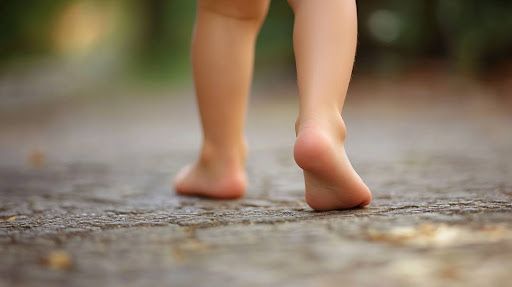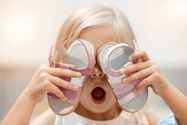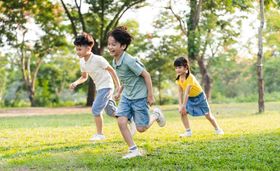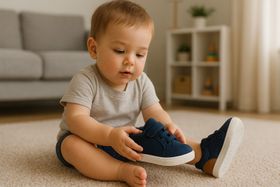Sever's Disease (Heal Pain) in Children: A Parent's Guide
Unlocking the mystery of heel pain: Learn about Sever's Disease, its causes, and how to provide the best support for your child's recovery
Published January 19, 2025

As a parent, watching your child struggle with heel pain can be concerning. Sever's disease, while intimidating in name, is a common growth-related condition that affects children during their developmental years.
This comprehensive guide will help you understand, identify, and manage this condition to ensure your child's comfort and quick recovery.
» Find the perfect shoes to help your child overcome heel pain
What is Sever's Disease?
Sever's disease, known as calcaneal apophysitis, mainly affects children between the ages of 8 and 15. This condition occurs when the heel's growth plate becomes inflamed, typically due to repetitive strain from physical activities.
Unlike other foot conditions like plantar fasciitis or Achilles tendonitis, Sever's disease is specifically related to growth and naturally resolves as the growth plate matures.
Here are some key aspects that make Sever's disease unique:
- It's directly linked to rapid growth spurts during childhood, where the heel bone grows faster than the surrounding muscles and tendons. This causes tension and stress on the growth plate.
- Unlike chronic foot conditions, Sever's disease is temporary and typically resolves entirely once the growth plate closes and the foot's development is complete.
- It can affect one or both heels simultaneously, and the intensity of symptoms may vary significantly between children.
» Read our parents' guide to helping your little one to walk
Causes and Risk Factors
There are the main reasons kids might develop Sever's Disease:
- Developmental Growth: During adolescent growth spurts, the heel bone grows faster than surrounding muscles and tendons, creating a mismatch that increases tension on the growth plate and leads to pain and inflammation.
- Physical Activity: High-impact sports like basketball, soccer, and running create repetitive stress on the heel bone and growth plate. This constant impact increases inflammation and makes active kids susceptible to developing the condition.
- Footwear Issues: Poor shoe choices can significantly impact heel health. Inadequate arch support distributes pressure unevenly across the foot, while insufficient cushioning fails to absorb impact from running and jumping.
- Anatomical Structure: Flat feet cause over-rotation and altered biomechanics, placing extra pressure on the heel. High arches reduce ground contact area, resulting in disproportionate weight distribution.
- Biomechanical Factors: Irregular walking patterns, differences in leg length, or excessive pronation can create uneven stress on the heel bone.
» Give your child the best support in their development
Recognising the Symptoms
Early identification of Sever's Disease symptoms is crucial for effective management and quicker recovery. Be mindful of the following:
- Heel Pain: Intense heel pain, especially after physical activity or on hard surfaces.
- Gait Changes: Limping and walking on tiptoes to avoid heel pressure.
- Local Symptoms: Swelling, redness, tenderness around the heel.
- Palpation Pain: Increased pain when squeezing the sides of the heel.
- Morning Stiffness: Discomfort or stiffness upon waking or after periods of rest.
- Referred Pain: Pain may extend to the arch or up towards the Achilles tendon.
How is it diagnosed?
Healthcare providers use a systematic approach combining physical examination with patient history to make an accurate assessment.
During the physical examination, providers apply pressure to specific points on the heel, checking for characteristic pain responses. Kids with Sever's Disease typically react immediately to heel pressure, often wincing or withdrawing their foot.
Providers collect detailed information about your child's athletic activities, growth patterns, and footwear choices to identify potential triggers. Understanding when symptoms started and how they progressed helps complete the diagnostic picture.
While X-rays don't show Sever's Disease directly, providers may order them to rule out other conditions like fractures or bone abnormalities. This step ensures a different underlying condition doesn't cause the heel pain.
» Want to support your baby's development? Explore our supportive footwear collection
How to Treat Sever's Disease
Recovery typically takes two to eight weeks, varying with activity levels and treatment adherence. Growth spurts can temporarily intensify symptoms, but following treatment recommendations helps ensure effective healing.
- Prioritize Rest and Activity Modification: Rest is key. Avoid activities that cause pain, like running and jumping. Encourage low-impact activities like swimming and cycling. Gradually return to sports to prevent the problem from coming back.
- Strengthening and Stretching: Stretching improves flexibility and reduces stress on the heel. Strengthening exercises help support the heel and absorb shock. Daily stretching combined with other therapies is the most effective.
- Ice Therapy: Apply ice packs to the heel for 15-20 minutes daily to reduce pain and inflammation. Over-the-counter pain relievers can help manage severe discomfort. Combining rest and ice therapy accelerates healing.
» Explore kids' shoes for orthotics and support their foot health
Why Supportive Shoes Are Essential
Appropriate footwear is vital in treating and preventing Sever's Disease by providing essential support and reducing stress on the heel's growth plate. The right shoes help distribute pressure evenly across the foot, minimise heel impact, and support proper foot alignment during activities.
Key features to look for in therapeutic footwear include:
- Shock Absorption: Well-cushioned insoles that effectively absorb impact forces during walking, running, and jumping activities, protecting the sensitive heel area.
- Heel Support: A firm heel counter stabilises the back of the foot, reducing excessive movement and decreasing pressure on the growth plate.
- Arch Design: Proper arch support that maintains natural foot alignment and prevents overpronation, which can place additional stress on the heel.
- Forefoot Flexibility: A design that allows natural toe movement while maintaining stability, ensuring comfortable movement without compromising heel protection.
- Overall Construction: Lightweight materials that minimise foot fatigue while providing adequate support throughout daily activities.
Strengthening and Stretching Exercises
These exercises help your child heal by strengthening their foot and leg muscles while gently stretching tight areas. Always keep them gentle and stop if your child feels pain.
Standing Heel Raises
Have your child stand beside a wall or hold your hands for balance. Ask them to rise on their tiptoes slowly like a ballet dancer, hold for a count of five (you can count out loud together), and then slowly lower back down.
Make it fun by pretending they're growing taller each time they rise. Aim for 10–15 times, but starting with fewer is okay.
» See what shoes podiatrists approve for kids
Towel Stretch Game
Have your child sit on the floor with their legs straight out. Loop a small towel around their foot (like a shoe-shine cloth). Let them hold the towel ends and gently pull toward their body, keeping their knee straight. Count together to 20, then release.
Tip: To help them understand the stretch position, you could say, "Let's make a banana shape with your foot."
ABC Toe Writing
While your child sits in a chair, have them pretend their foot is a pencil writing letters in the air. Make it engaging by calling out letters or having them spell simple words. This gentle exercise helps keep their ankle flexible. If they get tired, it's fine to take breaks between letters.
Resistance Band Exercise
With your child seated, wrap a light resistance band around their foot (like a big rubber band). Help them point their toes forward and then flex back like they're pressing and releasing a car's pedal.
Aim for 10–15 gentle repetitions. Make it playful by pretending they're controlling a spaceship or racing car.
Temporarily pause high-impact activities like running and jumping to allow for proper healing. These activities can exacerbate inflammation and slow down recovery. Consistent rest and gentle exercise will yield better results than pushing through pain.
» Learn about the benefits of being barefoot for kids
Supporting Your Child Through Sever's Disease
Handling Sever's disease is about balancing staying active and giving those growing heels the care they need. Many kids can enjoy their favourite sports with thoughtful adjustments to their routines.
Your role as a parent is crucial in helping your child build healthy habits that will serve them well beyond this temporary challenge. Investing in reliable footwear, maintaining regular stretching routines, and staying alert to any signs of discomfort will help prevent future episodes.
With proper management, most children return to their favourite activities without limitations once their growth plate matures.
» Say goodbye to heel pain and hello to happy feet with First Walkers
Disclaimer: First Walkers' information is intended for educational and informational purposes related to toddler footwear and feet. We encourage you to consider individual circumstances and consult qualified orthopaedists about specific conditions.





